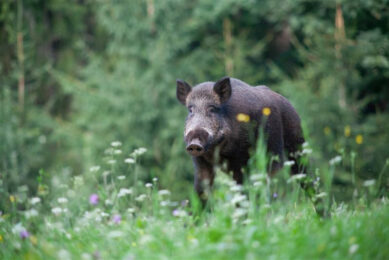Sanitising those water lines
Recently, I just returned from working in Europe, I happened to be present on two farms which were replacing parts of their water lines, and stopped to take a good look at the inside of the discarded piping.
They were really fouled up and I certainly wouldn’t want to drink water which had come through those pipes! Regular sanitising of water delivery lines has always been advised and this experience really confirmed how essential it is.
©
Fortunately there are products which can do the job such as Virkon ( Du Pont) and CID 2000 ( Cidlines).
©Since my visits, when raising the subject with clients the question arose “But how do I measure the volume of water down through the pipe run so as to arrive at the manufacturers correct dilution rate?” I had some equations from my college notes of 60 years back – based on gallons, of course – and decided I had better get some more recent information.
©
©Luc Ledoux, technical manager of Cidlines, kindly provided the following equation based on litres.
©
r (cm) x r (cm) x 3.14 x L ÷10
r = radius in cm©©© L = length of pipe run in metres
Pipes are usually quoted in diameters, so as an example For a 1” ( 2.54cm) diameter pipe ( = 1.27 cm radius, radius being half the diameter) and a line length of 100 metres counting in the drops as well, this would be…
1.27 x 1.27 x 3.14 x 100 ÷ 10 = 50.65 litres, or 0.5 litres per metre.
©©©©©©©©©
Any header-tank volume needs to be added on to this pipe volume. Cidlines advises holding the treated water in situ for 4 to 6 hours before flushing through, and be sure to remove any of the resulting dark brown residues from any bowls or troughs.
©
Another source of slime
Another source is from the undersides of leaf/tongue drinker bowls. I find stockpersons often fail to pressure-wash underneath the tongues as they need to be slightly lifted to do so. When I run my finger under a leaf in a newly sanitised nursery fitted with bowls it too frequently comes out smeared with dark slime. This can house an organism called Balantidium coli which I am informed is not a desperate pathogen, but nevertheless can cause tummy upset and inappetance in nursery pigs.
©
©©©©©©©©©©©©©©©©©©©©©©©©©©©©©©©©©©©©©©©©©©©©©©©©©©©©©©©©©©©© —-
©
*** My apologies to readers who kindly took the trouble to comment on my recent blogs. I have been working abroad and when at home, spending long hours writing another pig textbook against a May deadline and planning a further one for 2011 – I will respond shortly.
©











